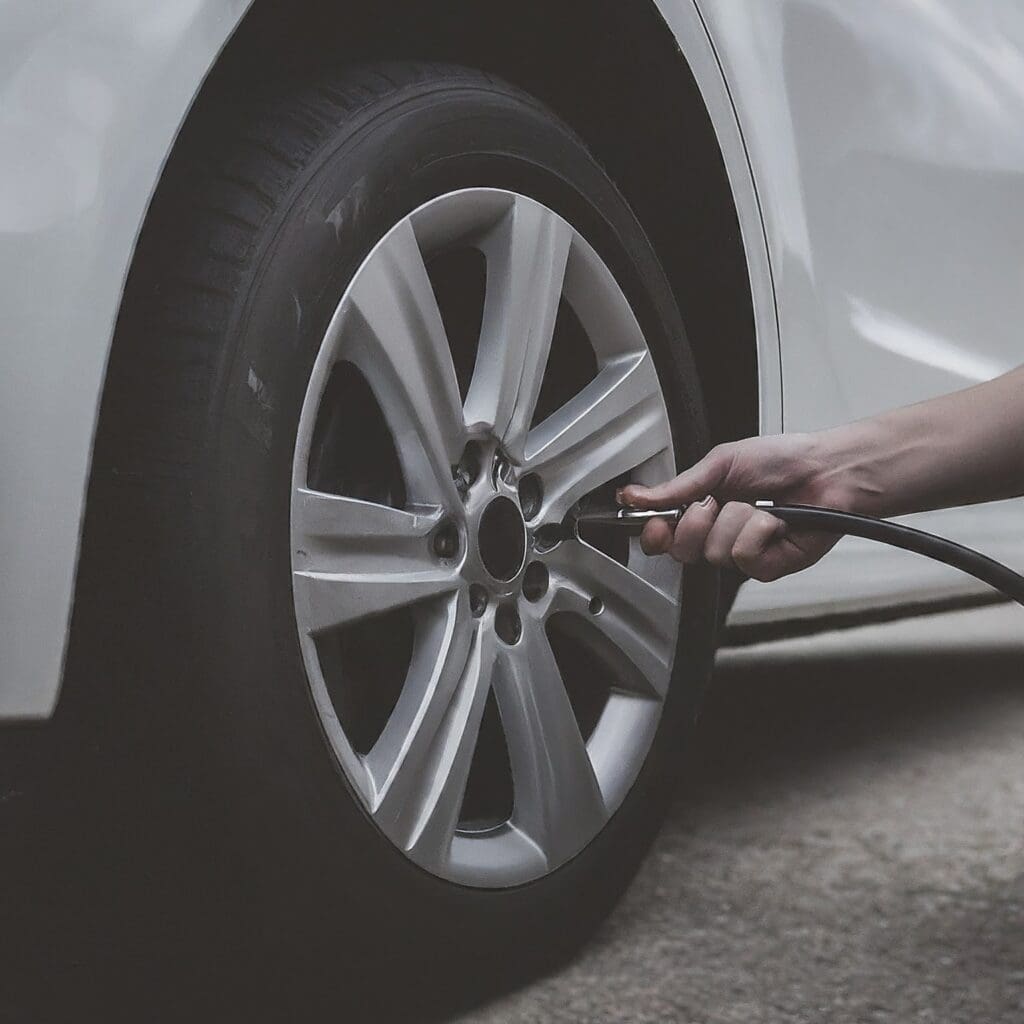Tire safety is a critical component of vehicle maintenance that directly impacts your driving experience, vehicle performance, and overall road safety.

In this comprehensive guide, we will delve into the importance of tire safety, the role of tire tread patterns, proper maintenance practices, and how to choose the right tires for your vehicle.
By the end of this guide, you will thoroughly understand how to keep your tires in optimal condition and ensure a safer driving experience.
Table of Contents
- Introduction
- Understanding Tire Tread Patterns
- Longitudinal Tread Patterns
- Transverse Tread Patterns
- Importance of Consistent Tread Patterns
- Sources and Mitigation of Tire Noise
- Tire Maintenance Practices
- Regular Inspections
- Proper Inflation
- Alignment and Balancing
- Rotating Tires
- Choosing the Right Tires
- Types of Tires
- Factors to Consider
- Conclusion
1. Introduction
Tires are the only point of contact between your vehicle and the road, making their condition and performance crucial for safety. Neglecting tire maintenance can lead to decreased traction, poor handling, and even catastrophic failure.
This guide will help you understand the key aspects of tire safety and provide practical tips to ensure your tires are always in top condition.
2. Understanding Tire Tread Patterns

Tire tread patterns are designed to meet specific driving conditions and performance needs. The tread pattern on a tire serves multiple purposes, including increasing friction, reducing noise, dissipating heat and water, improving vehicle handling, and enhancing visual aesthetics.
Different tread patterns exhibit varying performance characteristics, which we will explore in this section.
Longitudinal Tread Patterns
Longitudinal tread patterns feature grooves aligned in the same direction as the tire rotation, forming one or more continuous circles around the tire tread. These tires offer several advantages:
- Low Rolling Resistance: This improves fuel efficiency and reduces CO2 emissions.
- Reduced Noise Levels: The continuous grooves help minimize the noise generated by the tire-road interaction, enhancing comfort.
- Excellent Drainage Performance: The design effectively channels water away, reducing the risk of hydroplaning.
However, longitudinal tread patterns may have slightly weaker driving force and braking performance compared to other types.
They are generally suitable for urban roads and high-speed driving, making them a common choice for family cars and high-speed buses.
Transverse Tread Patterns
Transverse tread patterns have grooves designed perpendicular to the tire’s circumferential direction, resulting in a large contact area with the road. The main benefits include:
- Excellent Braking and Driving Force: The increased contact area provides better grip and traction.
- Better Performance on Loose Surfaces: These tires are effective on gravel and dirt roads.
Despite these advantages, transverse tread patterns have drawbacks such as poor drainage, increased noise, higher wear rates, elevated fuel consumption, and reduced speed and handling performance.
They are primarily used in large trucks and construction machinery.
3. Importance of Consistent Tread Patterns
Using different tread patterns on the front and rear tires can significantly impact vehicle performance and safety.
Inconsistent tread patterns can lead to imbalanced weight distribution, loss of vehicle stability, and poor water conductivity, posing a significant risk, especially in wet conditions.
Therefore, it is highly recommended to use tires with the same tread pattern to ensure balanced grip and safe driving.
4. Sources and Mitigation of Tire Noise
Tire noise arises from three main sources:
- Air Compression: The air in the grooves gets compressed as the wheels rotate, creating a noise similar to air explosions.
- Tire Vibration: The carcass and tread portion of the tire vibrate, with harder materials amplifying this noise.
- Impact Noise: The noise of tread blocks hitting the ground contributes to overall tire noise levels.
Manufacturers employ special tread designs, groove configurations, and structural adjustments to produce silent tires, reducing noise caused by air compression, tire vibration, and the impact of tread blocks on the road surface. These modifications result in a more comfortable and enjoyable driving experience.
5. Tire Maintenance Practices
Proper tire maintenance is essential for ensuring safety and extending the life of your tires. Here are some key practices to keep your tires in optimal condition:
Regular Inspections
Regularly inspect your tires for signs of wear and damage. Look for:
- Tread Depth: Ensure the tread depth is above the minimum legal limit. Use a tread depth gauge to measure it accurately.
- Cracks and Bulges: Check for any visible cracks or bulges on the sidewalls.
- Embedded Objects: Remove any stones, nails, or other objects lodged in the tread.
Proper Inflation
Maintaining the correct tire pressure is crucial for safety and performance. Underinflated tires can cause excessive wear, poor handling, and increased fuel consumption, while overinflated tires can reduce traction and make the ride less comfortable.
Check your tire pressure regularly and adjust it according to the manufacturer’s recommendations.
Alignment and Balancing
Proper alignment and balancing are vital for even tire wear and smooth handling. Misaligned wheels can cause uneven tread wear and affect vehicle stability.
Have your wheels aligned and balanced periodically, especially after hitting a pothole or curb.
Rotating Tires
Rotating your tires regularly helps distribute wear evenly across all tires, extending their lifespan. Follow the manufacturer’s recommended rotation pattern and interval, usually every 5,000 to 8,000 miles.
6. Choosing the Right Tires
Selecting the right tires for your vehicle involves considering various factors to ensure they meet your driving needs and conditions.
Types of Tires
There are different types of tires designed for specific purposes:
- All-Season Tires: Suitable for a variety of weather conditions, offering a balance between performance and longevity.
- Summer Tires: Optimized for warm weather, providing excellent traction and handling on dry and wet roads.
- Winter Tires: Designed for cold weather and snowy conditions, featuring deeper treads and softer rubber for better grip.
- Performance Tires: Built for high-speed and sporty driving, offering superior handling and traction.
- Off-Road Tires: Made for rugged terrain, with aggressive tread patterns for maximum grip on loose surfaces.
Factors to Consider for Tire safety
When choosing tires, consider the following factors:
- Driving Conditions: Assess the typical weather and road conditions you encounter.
- Vehicle Type: Select tires designed for your specific vehicle type and load capacity.
- Driving Style: Choose tires that match your driving habits, whether it’s daily commuting, long-distance travel, or performance driving.
- Budget: Determine your budget and find tires that offer the best value within that range.
- Tire Size: Ensure the tires fit your vehicle’s specifications, including size, load index, and speed rating.
7. Conclusion
Tire safety is an essential part of vehicle maintenance that must not be ignored. It is important to understand that safety on the road contributes to a person’s overall well-being. It’s important to know tire treads.
By understanding tire tread patterns, maintaining consistent tread designs, mitigating tire noise, practicing proper tire maintenance, and choosing the right tires for your vehicle, you can enhance your driving experience and ensure safety on the road.
Regular inspections, proper inflation, alignment, balancing, and tire rotation are essential practices that will extend the life of your tires and keep you safe while driving.
Make informed decisions when selecting tires, considering your driving conditions, vehicle type, and budget.
These guidelines allow you to enjoy a smoother, safer, and more comfortable ride.



